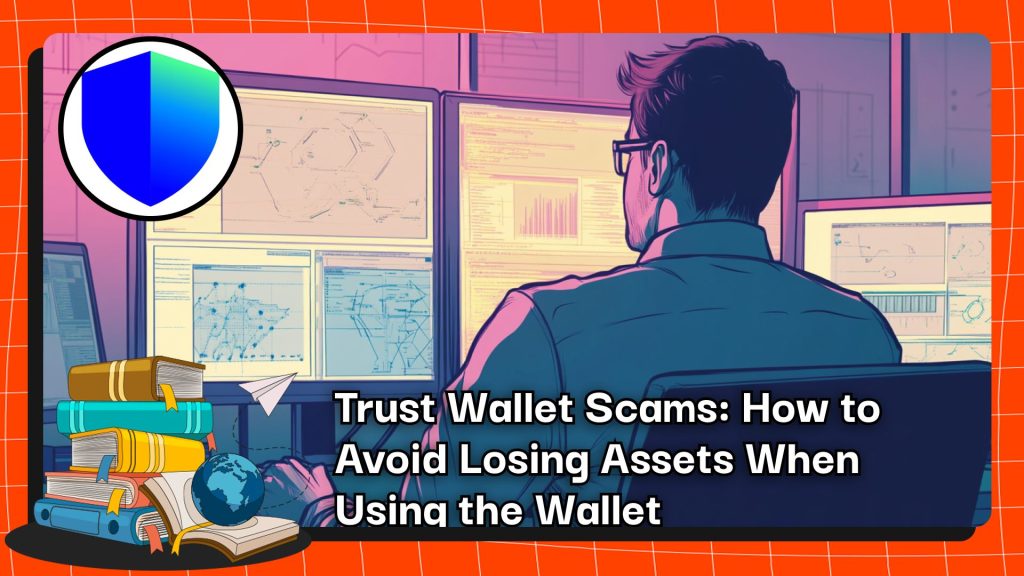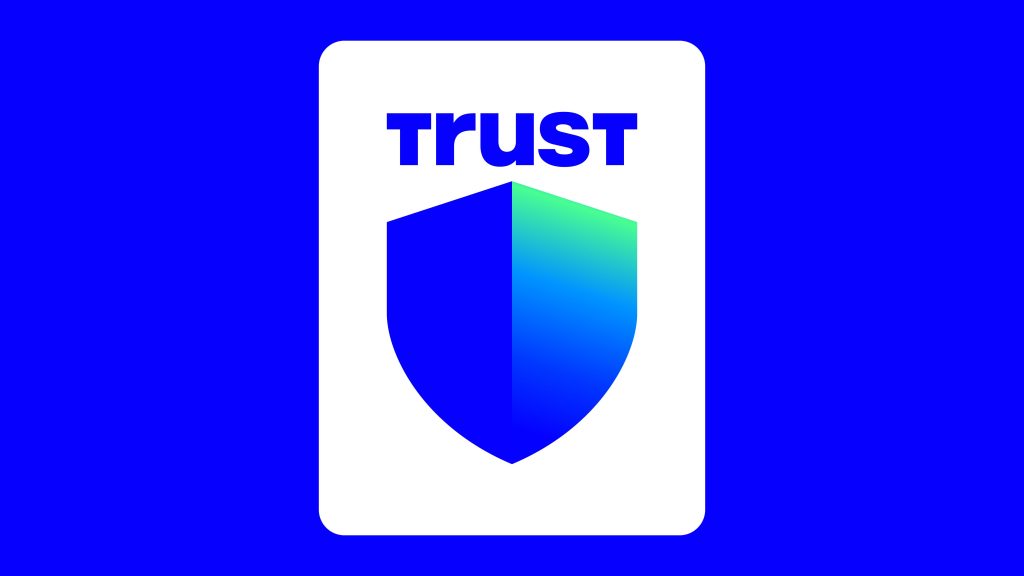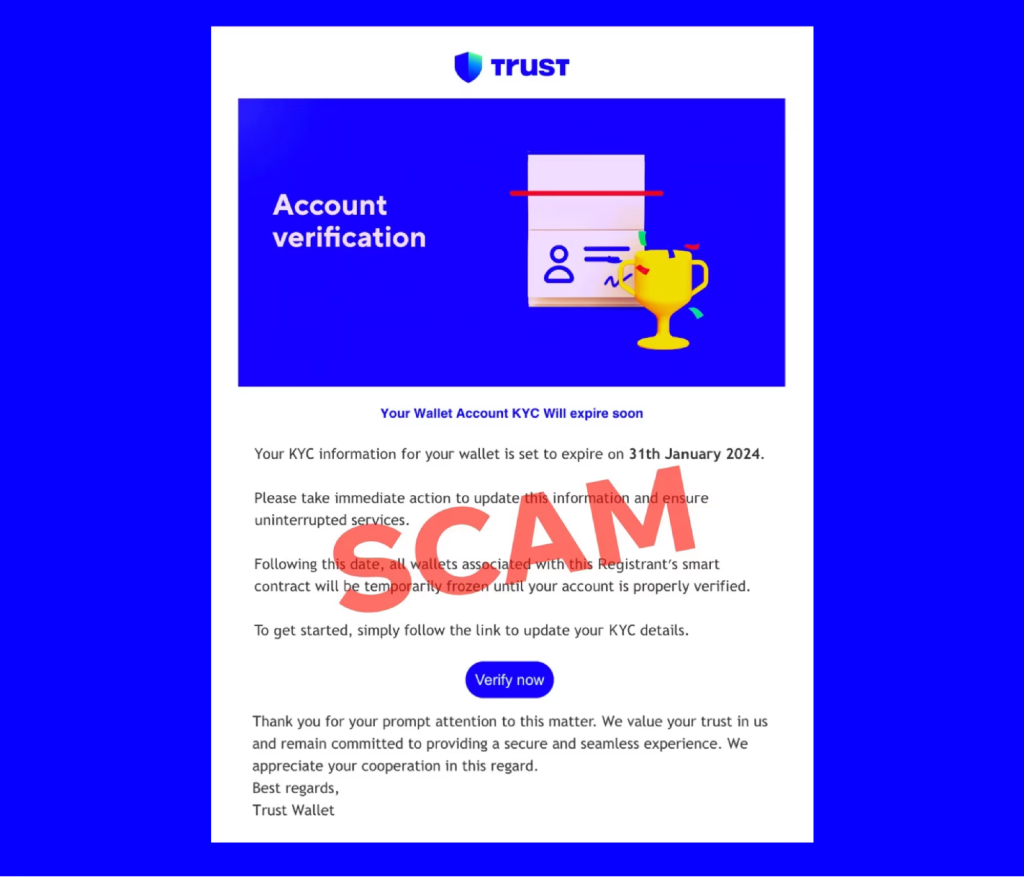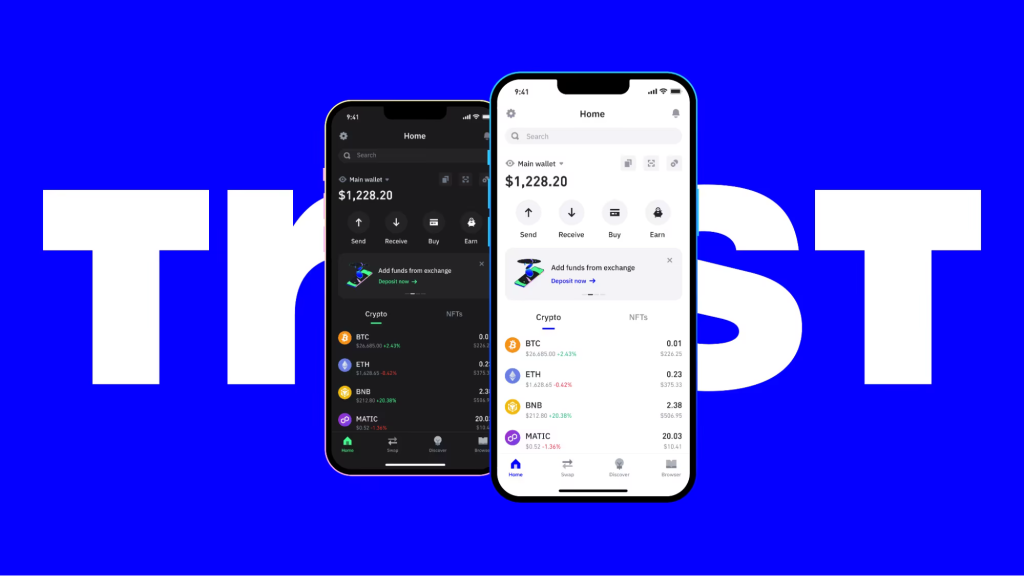Trust Wallet is one of the leading blockchain wallets, and since gaining popularity, many scammers have emerged to hijack the crypto accounts of hardworking people. Let’s learn about Trust Wallet scams and how to prevent them in this article with Coincu.

What is Trust Wallet?
Trust Wallet is a self-custodial cryptocurrency wallet that simply enables users to be fully in control of their digital assets. As the official wallet for Binance, the world’s biggest cryptocurrency exchange, Trust Wallet has been able to provide a highly safe platform empowering users to manage a wide variety of assets, from cryptocurrencies and meme coins to NFTs.
Available on mobile and desktop, Trust Wallet provides a seamless experience for users of digital assets to buy, sell, store, and swap. Both the mobile app and the browser extension are equipped with features that allow you to deposit, withdraw, and generally manage your cryptocurrencies with ease. Whether it’s trading or entering into the space of digital assets, the robust functionality and ease of use make Trust Wallet an essential tool in the cryptocurrency space.

Read more: Trust Wallet Review: The Most Trusted & Secure Crypto Wallet
Overview of Trust Wallet’s Features
Trust Wallet stands unparalleled in the cryptocurrency space because of the ease it provides when using its DApp integration. It means that users can safely interact across different blockchains.
Supporting more than 100 blockchains and over 10 million digital assets, Trust Wallet brings a lot of versatility to the table. It gives all features, from buying and sending to receiving, staking, trading, and storing of cryptocurrencies.
As a hot wallet, Trust Wallet is always connected to the internet, thus giving users maximum flexibility in terms of accessing their assets from anywhere and at any time. Its wide availability on Android and iOS and as a browser extension also makes it quite popular among crypto enthusiasts.
Why Trust Wallet is Popular Among Crypto Users
What clearly sets Trust Wallet apart in the digital wallet marketplace is its versatile mobile application, offering an all-rounded approach toward the management of crypto assets. Unlike hardware wallets and other noncustodial options, security, multi-chain support, and seamless decentralized application integration make up the hardline options of Trust Wallet.
While most non-custodial wallets differ in features and UI, the bottom line is that users are in charge of their assets. Trust Wallet, however, gives more enhanced security measures and compatibility with multiple blockchain networks, thus making it a powerful and flexible tool in meeting digital asset management needs.
Read more: How To Find Your Trust Wallet Recovery Phrase: Important Security Tips To Know!
Common Types of Trust Wallet Scams
Phishing Scams
Phishing is a type of misleading concept whereby fraudsters masquerade as prominent organizations to steal sensitive information like passwords or seed phrases. For example, scammers posing as support staff from the Trust Wallet would tell you there is a security issue with your account, so please confirm your seed phrase.
Never share your private keys or recovery phrases with anybody to save yourself from this kind of fraud. Check the authenticity of every communication that reaches you. No genuine company will ask for this kind of sensitive information even when telephoned. Be vigilant and cautious to avoid becoming victims of fraudulent activities.
Fake Support and Customer Service
Impostors often call the target in the name of customer service from Trust Wallet. They may mail, message on social media, or send texts via chat applications in order to provide solutions for the trouble in your account or other transactions.
Actually, they only wish to get personal information from you. Be wary of random messages claiming to be from customer support. You should not respond to any message without verifying whether the communication is actually from Trust Wallet by calling them back on their official contact lines.
Fake Trust Wallet Apps or Websites
Another quite common scam is when scammers create fake websites or apps, which look like some kind of legitimate services, but they are actually scams. In this way, fraudsters can steal user login data or private keys, and then log in to real wallet applications without authorization.
Be careful about URLs. Always check if it is real, never download applications from unverified sources; use the official stores for such purposes. Never download applications from unofficial sites or open links in unsolicited messages.
Wallet Dusting Scams
Wallet dusting is when a very small amount of cryptocurrency—referred to as “dust”—is broadcast to a large number of digital wallets to exploit the transaction history, helping scammers identify and further target specific people for phishing or other malicious attacks.
If you see some dust cryptocurrency in your wallet and you didn’t expect it, it could be a dust scam. You should not transfer or interact with the dust as doing so will reveal your wallet address and put you at greater risk of cyberattack.
Be aware that such scams may happen in order to avoid putting your digital assets at risk.
Download and Install Harmful Software
In most cases, scammers target this by convincing users to download malicious software. They usually attract them to download fake security solutions for wallet security or even promise to enhance their wallet security. One common scenario would be when a user receives an email asking them to download some sort of ‘security update’ to the Trust Wallet.
But hidden inside it could be a keylogger, one of the dirty tools that monitor and log keystrokes in pursuit of private key theft.
Only download software from known, trusted sources, and never give in to unsolicited requests to install new software. For more detailed tips on how to avoid a tech support scam, see our specialized guide.
How Scammers Target Trust Wallet Users
The currently circulating Trust Wallet scam site impersonates the official wallet and tricks users into providing their email addresses, with which they then send emails to their victims informing them that their Trust Wallet account needs verification and buttons or links are given to “Verify your wallet”.
These URL links take the user to a spoofed webpage design similar to that of Trust Wallet, where users are then prompted to fill in their passphrases. Passphrases are very sensitive—they are a major part of the regeneration of wallets should they be lost, stolen, or destroyed.

In this design, if a user enters the passphrase on this spoofed webpage, he/she has practically ceded full control of the wallet to the scammers, leading to the loss of virtually all of the user’s cryptocurrency.
At times, they may even encourage illegal fund transfers from the victim’s account to another wallet. These threats sometimes extend to other levels, with firms asked to download sham documents, such as NDA or KYC forms, and these documents carry malicious software.
How to Identify and Avoid Trust Wallet Scams
Keeping safe with a Trust Wallet scam comes down to being vigilant and way too careful. Here are essential ways to make sure your assets are intact:
- Keep Your Private Keys Confidential: Private keys or recovery phrases provide access to your wallet. Never share them because they are the way to your funds.
- Confirm the Source of Communication: Be on guard with emails or other messages soliciting sensitive information. A real service should never ask for your private keys or recovery phrases. Always confirm who is asking you for details.
- Download from a Trusted Source: Download Trust Wallet directly from the official store or from trusted sources to avoid fake platforms. This way you are safe from fake apps.
- Verify URLs: Check twice before visiting the Trust Wallet website or any subsidiary. An extra or missing character will take you to a phishing site.
- Avoid Unrealistic Offers: Be cautious with any kind of offer, which indicates a sure return on a very small investment. Most scammers use such a “giveaway” trick to trick a victim. They ask to return more crypto.
- Research New Tokens Thoroughly: For every new token, please do some research before you invest. If you have the ability to buy but you cannot sell, in most cases, you are probably dealing with a scam.
- Avoid Small, Unsolicited Crypto Deposits: Be cautious about small, unsolicited crypto deposits. If you receive very small amounts of cryptocurrency for no apparent reason, it could be a dusting attack. Do not transfer those funds, as they might be part of a scam.
- Beware of Pump and Dump Schemes: If a cryptocurrency’s price skyrockets, investigate it. Sharp increases can be manipulated, so investors are suckered in.
- Stay Informed of Evolving Scams: Scams keep on evolving. You should make sure you are informed of new tactics, so you stay safe.
- Report Suspicious Activity: Should you believe you have come across something similar to a scam, please report it to Trust Wallet or their relevant support systems. Their systems are only as good as the scams known.
- Look Up Claims of Account Problems: If your friend reaches you out and claims that they locked your wallet, first, confirm the situation from Trust Wallet’s official communication. Likewise, you should treat all government or utility company claims on their respective sites.
- Limit Job Advertisements: Ignore the job advertisement for cash-to-crypto converted or crypto mining-related jobs that sound fishy or too good to be true.

What Should I Do If I Get Scammed on Trust Wallet?
If you lost your credentials or fell victim to a Trust Wallet scam and the issue was not related to a security breach or a fault in Trust Wallet, the company is not accountable for the loss of digital assets. In such cases, the users’ problem would not be solved if reported directly to Trust Wallet. But you still have a number of ways to at least report this scam so that it may not potentially cause problems for others.
Report to the Government
Residents of the U.S. may file a report with a few agencies:
- Federal Trade Commission (FTC)
- Commodity Futures Trading Commission (CFTC)
- U.S. Securities and Exchange Commission (SEC)
- FBI Internet Crime Complaint Center (IC3)
Conduct a search online for your country’s relevant financial regulatory bodies or cybercrime units to make a fraud report. This action might lead to a resolution.
Report the URL to Hosting Providers
If the money was lost through a fraudulent website, you have the added advantage of preventing other victims that might fall victim. To report against the site, take the below steps:
- Visit a Whois Lookup site.
- Enter the URL of the site into the search box provided.
- Find the email address for the registrar, usually on the “Registrar” page, often as abuse@servicename.
- Email this address, including the website’s URL and your concerns that the URL is linked with a fraudulent website.
Report to Search Engines and Browsers
Reporting the fraudulent site to search engines and browsers can help protect others:
- Google: Report a site, it gets pulled out of Google search results, and browsers like Chrome, Firefox, and Opera block it. You’ll be able to report a site using the Safe Browsing Report page.
- Microsoft: Reporting to Microsoft will block the site on Internet Explorer and Microsoft Edge, will stop the site’s links in Outlook.com, and remove it from Bing and Yahoo search results. Use the report page at Microsoft SmartScreen.
Conclusion
With the skyrocketing use of cryptocurrency and the meteoric rise of popularity in prime targets for fraudsters, the increase in fraudulent activities that accompany the increase in the number of Trust Wallet users is also unfortunate, targeting people unversed in these activities.
There are multiple ways in which fraudsters try to fool the user. Common scenarios are phishing by attackers, who try to act as some legitimate service to capture sensitive information from their potential victims, or simply apps that mimic Trust Wallet to get access to users’ funds.
The threats are always evolving, and it’s for this reason that alertness and being informed are key to safeguarding oneself against them. Awareness and education are indeed great and basic defenses against fraud in the realm of digital currencies.
FAQs About Trust Wallet Scams
Can funds be stolen from a Trust Wallet?
Yes, funds can be stolen from a Trust Wallet if you fall victim to scams or security breaches.
Is Trust Wallet used in scams?
Trust Wallet itself is not used in scams. Rather, scammers exploit the popularity of Trust Wallet to deceive users. The wallet is a legitimate and secure platform, but its widespread use makes it a target for fraudulent activities.
Is Trust Wallet really safe?
Yes, Trust Wallet is a secure and easy-to-use cryptocurrency wallet that gives you full control over your crypto assets. Many users prefer Trust Wallet because it comes with additional security features.
Can I recover my funds if I fall victim to a Trust Wallet scam?
If you fall victim to a scam involving Trust Wallet, recovering your funds can be challenging. Almost all crypto hacks involve the complete loss of your funds.
How to spot and handle phishing emails?
Phishing e-mails can be identified by the sender’s e-mail ID, generic greetings used, and urgency expressed in the mail. Isolate suspicious links or attachments that may come unsolicited, and watch out for misspellings or grammatical errors, which are most times telltale signatures of a scam.
To mitigate the incidences of phishing, do not click on links or open attachments. Report the email to the organization being impersonated or to your email provider, then delete the email. All claims should be verified by contacting the organization directly through official channels. Keep your security software up-to-date to protect against potential threats.
| DISCLAIMER: The information on this website is provided as general market commentary and does not constitute investment advice. We encourage you to do your own research before investing. |


















